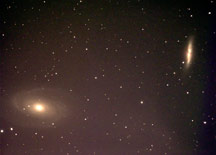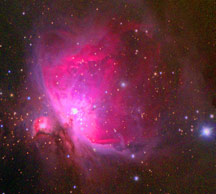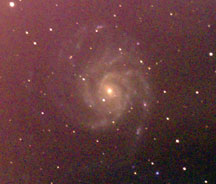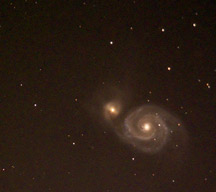
Corynn made this nice image of the Whirlpool
Galaxy M51. sRGB+gamma. 3x5min stack in Registax 3, Photoshop CS2: levels,
AstroTools 'make stars smaller', 'space noise reduction', 'deep space
noise reduction', smart sharpen, saturation, cropped. Fog came in during
the final image. The off-center composition appealed to her, like a
frisbee in the Universe she said. OK...the more I look at it, the more
it kinda grows on you.
|
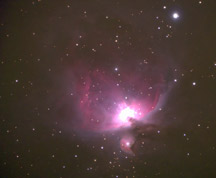
Ben's image of the Orion Nebula - 2x5min,
sRGB+gamma, stacked in Registax 3, Photoshop CS2/AstroTools: 'space
noise reduction', 'deep space noise reduction', levels, saturation,
smart sharpen, cropped.
|
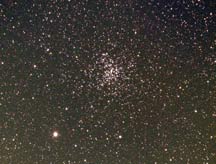
Emily made this image of the open cluster
M36 in Auriga. 2x5min, sRGB+gamma, flat fielded, stacked in Registax
3, Photoshop CS2: levels, saturation, cropped
|
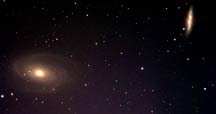
Jacob took this nice image of the M81/M82
group in Ursa Major. Moonlight made for a bright sky. 2x5min, sRGB+gamma,
stacked in Registax 4. Photoshop CS2/AstroTools: Levels, cropped,
|




